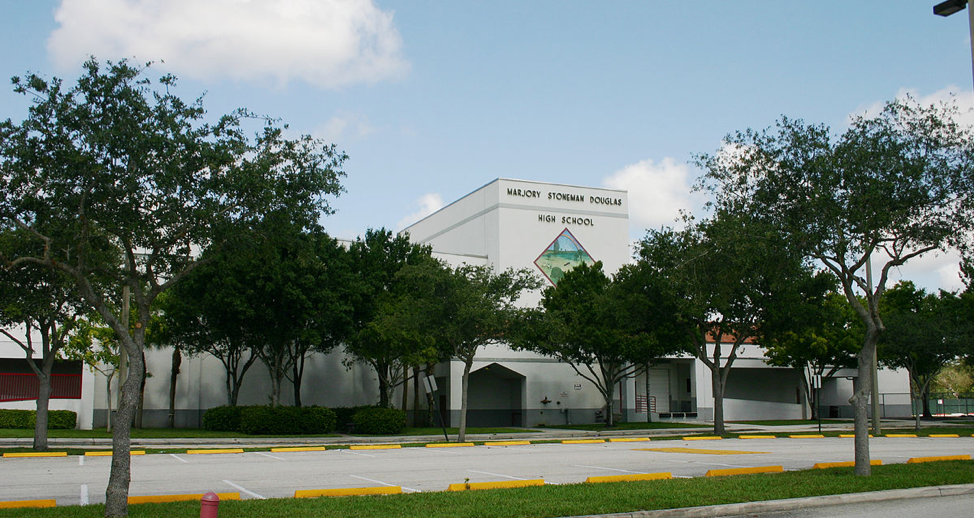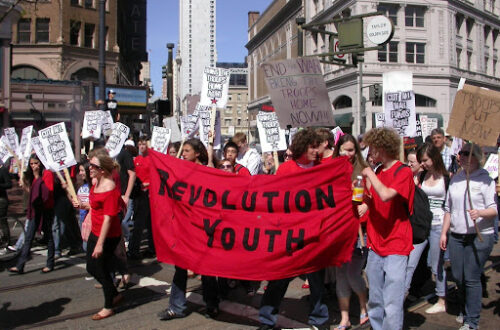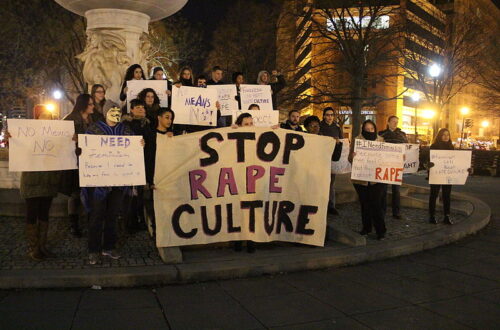I distinctly remember the day I returned to Marjory Stoneman Douglas High School, exactly two weeks after the deadly shooting that killed 17 and wounded 17 more.
Police cars lined the streets, bumper to bumper, starting a block away from the school. As their lights flashed, my heart began to race.
The emergency responders and policemen milling around bore an eerie resemblance to the chaos I had witnessed just two weeks earlier. Police cars, ambulances and SWAT cars showed up by the hundreds on that fateful day.
As I walked onto campus, I was astonished by what I saw. As if to add insult to injury, the cops on our campus were carrying AR-15s, the same weapon used by the shooter. I was terrified.
The overwhelming presence of police eventually lessened to a point where our campus of 3,200 students housed roughly a dozen officers. This stood in stark contrast to the single officer that presided over our campus before the shooting.
The radically increased police presence was mirrored by most other Florida schools, which now have nearly twice as many police officers as they did before the Parkland shooting. Student activists are protesting.
It is absurd to think students will feel secure on a campus where policemen walk around with bulletproof vests and assault rifles, glaring at students as if we are the next assailant rather than a child suffering from trauma. This intimidation tactic results in students comparing their school to a prison.
Police presence in schools has proven to be detrimental to students for reasons beyond the apprehension it induces. A recent study by University of Florida professor F. Chris Curran, Ph.D., found that increased police presence in schools has led to more arrests following in-school incidents — the rate doubled from 40% to 82%.
Students of color are disproportionately affected by police presence in schools as well. Black males are three times more likely to be arrested in school than white males; Black females are 1.5 times more likely.
Countless studies confirm that increased police presence in schools is not efficient as it leads to disproportionate victimization of students of color, increased arrests following minor incidents, and lower test scores, attendance, and graduation rates. Likewise, when tragedy strikes, police in schools have proven that they are ill-equipped to diffuse the situation.
The resident officer at Marjory Stoneman Douglas hid 100 feet from the building as gunshots echoed through the halls and people died. Similarly, six deputies waited for backup outside the building during the Columbine shooting.
Police officers’ inability to respond when they are needed most, their tendency to demonstrate racial bias and their exaggerated responses show they are not the solution to secure school campuses.
Former Marjory Stoneman Douglas student Darian Williams weighed in, suggesting that the “vast majority of safety relies on how [schools] treat their students…and how they address overall mental health.”
Nikolas Cruz, the Parkland shooter, was a prior student at Marjory Stoneman Douglas. He displayed numerous red flags. The Broward County Sheriff’s Office and the FBI were notified dozens of times regarding his violence toward small animals, threatening comments on social media, and self-identification as a “professional school shooter.” Nothing was done.
The answer to this problem should not have been increased police presence after the violence. It’s a more secure campus now — one where gates aren’t left open, better surveillance of security tapes, more mental health resources, and better training for teachers, staff, administrators and security guards on how to discern warning signs and diffuse situations.
School shootings are rare and often preventable. Shooters give copious warning signs with 78% of them revealing their plans before the crime. The warning signs from Cruz were ignored, however.
If students on a campus who experienced a school shooting are displeased with increased police presence, if we feel less safe, then the Parkland shooting should not be the precedent that necessitates radically increased police presence in schools. We do not want it. We want stricter gun regulations, thorough background checks and emphasis on mental health.
Florida’s decision to double police presence in schools is met by resistance because it was not what we asked for; it exacerbates existing issues and creates new problems. It is not what we want for fellow students, and it is not the one-size-fits-all answer to preventing crises on school grounds.
Featured image: Marjory Stoneman Douglas High School. Unmodified public domain photo by Formulanone.





